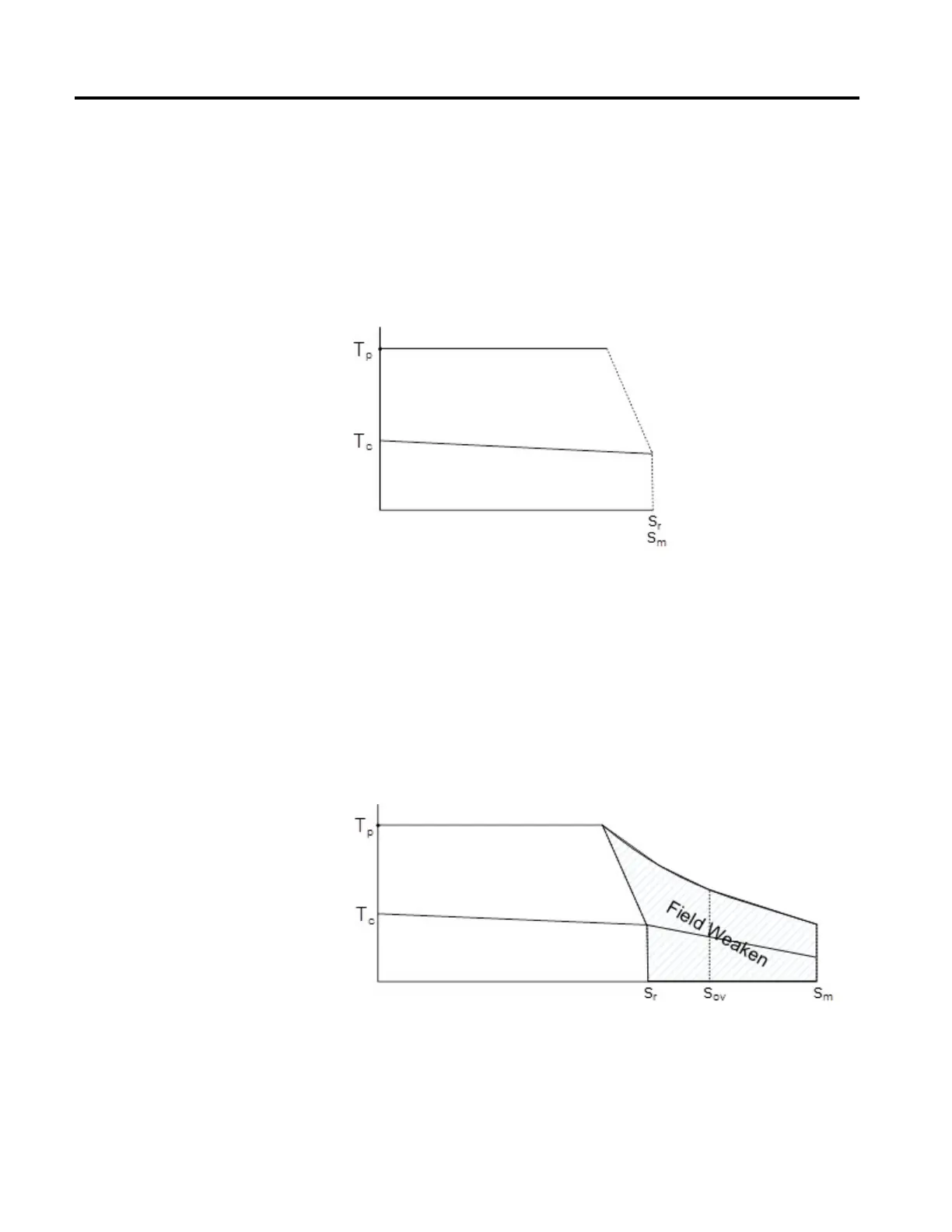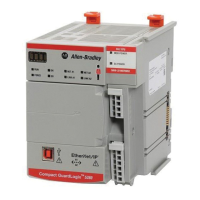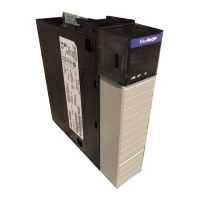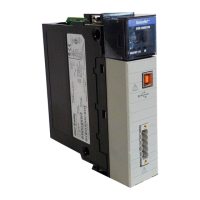Rockwell Automation Publication MOTION-RM003I-EN-P - February 2018 231
PM Motor Torque-Speed Curve
A generalized Torque-Speed curve for a PM motor is shown in the following
graph. The two curves shown define the continuous (T
c
) and peak torque (T
p
)
capabilities of the motor. PM motors typically specify a 'rated speed' (S
r
) based on
rated voltage and continuous torque and also a 'max speed' (S
m
) based on the
maximum operating speed. Often the specified rated speed and max speed for the
motor are set to the same value.
Field Weakening
PM motors can also be operated using a technique called "field weakening" to
extend the top speed capability of the motor. Field weakening uses active current
vector control to reduce the effective magnetic field strength from the permanent
magnets, enabling higher speeds at the expense of lower torque production. While
the use of field weakening to significantly extend motor speed range is more
common for Interior PM (IPM) motors, the speed range of Surface-mount PM
(SPM) motors can be significantly extended as well. The following graph
illustrates the PM Motor Torque-Speed Curve with Field Weakening.
When the drive applies field weakening to a PM motor to reach higher than rated
speed, the drive's motor current vector control algorithm effectively decreases the
motor Ke. This reduces the resulting Counter EMF (CEMF) voltage to be less
than the DC bus voltage. However, if this active current vector control is suddenly
removed, the Ke value would revert to the nominal value and the CEMF voltage

